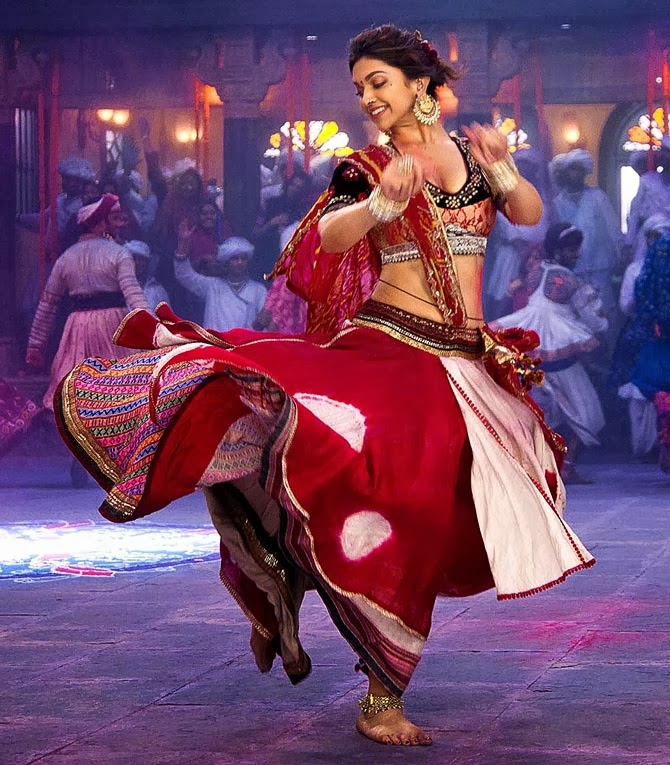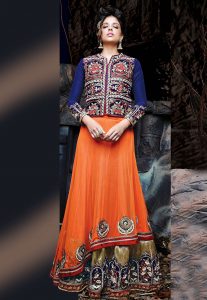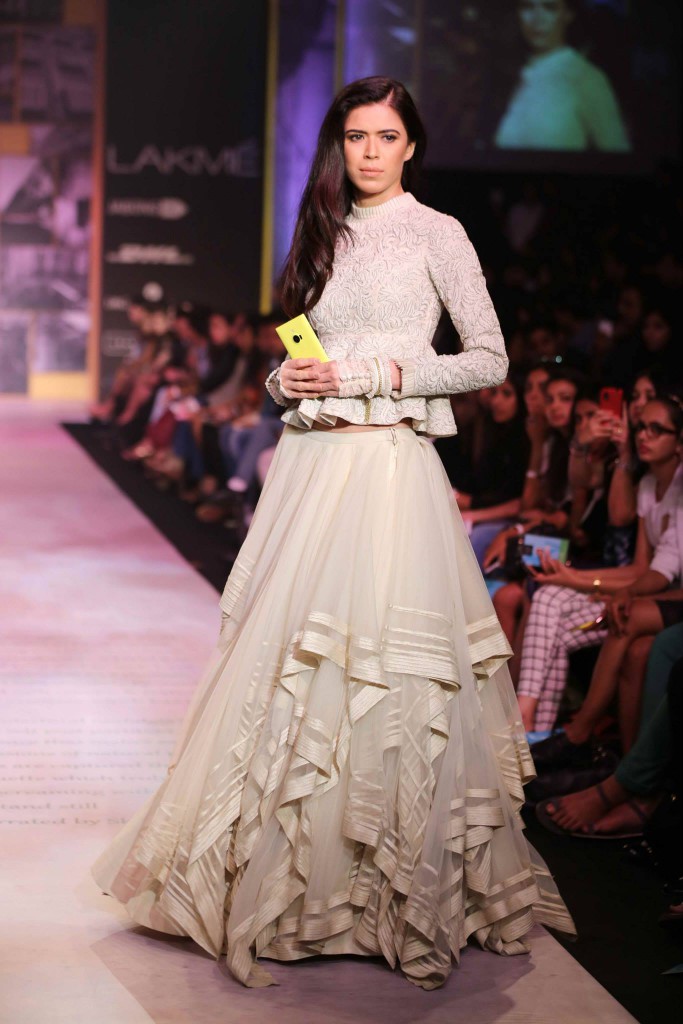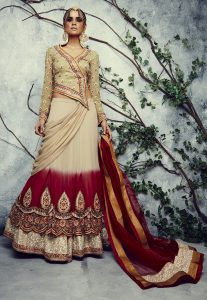
Layered Lehenga
A Layered Lehenga, as the name suggests, has several layers of materials on the skirt, forming flares of different sizes from top to bottom of the skirt. Layered Lehengas are dresses that have been inspired from the traditional Indian dress lehenga or ghagra, which has been modernized by adding multiple layers of fabric. A lehenga is essentially a long skirt which is embroidered and which may be pleated or gathered at the waist, giving it a distinct appearance. Being a part of long-standing traditions of India, these dresses have undergone a series of innovations and the influence of the many cultural elements of the country are evident in all designs of the lehengas or ghagras.
Background
The roots of Lehenga can be traced right up to the known beginning of the cultural history of India. These garments were worn by the women from all walks of life, prominently in the northern and central parts of the country. There have been several variants of the lehenga across India, with the influence of many states like Punjab, Rajasthan, Gujarat, Madhya Pradesh, Uttar Pradesh and others being present in the designs of these garments. Along with these states, lehengas were also popular in regions of Tamil Nadu, Karnataka and Andhra Pradesh with their unique embroideries and designs. The concept of Layered Lehenga has been present for centuries being made using two to three layers of materials like khadi and cotton. This concept has been further enhanced in recent times with several new styles being incorporated.
Sources of inspiration
Layered Lehengas, like many other Indian outfits, are not bound by any limitations of designs, patterns and embroideries. A number of styles ranging from gota patti work to resham embroidery can be found on these dresses. The Phulkari embroidery work from Punjab, Chikankari work from UP, Nakshi work from Bengal along with international embroidery styles including Zari and Zardozi have long been amongst the most popular designer work on lehengas. Layered lehengas are available in several different forms today, with the main classifications being carried out on the basis of the layers. These include lehengas for which several layers are present on the surface and the lehengas in which the layers are internal.
The making
Artisans from different regions of India have been in the practice of creating lehengas for generations. Region specific embroideries such as Sheesha, Phulkari, Chikan, Nakshi and many more have been passed down in the families over many generations. With the advent of industrialization, the practice of producing these outfits has seen an increase in the involvement of machinery, but most of the embroidery work for these dresses is still done by hand, to achieve the perfect look.
Style and variety
Layered lehengas can be made of several different fabrics and even different combinations of fabrics. These outfits are available with layers of the same fabrics such as crepe, net, cotton and faux georgette to name a few. In combining different fabrics, the most commonly used fabric is net, which complements the other materials of the dress perfectly and keeps the dress light in terms of weight.

Orange and Dark Beige Net Double Layered Lehenga Choli with Dupatta
The designs on these lehengas range from a minimalistic design on the borders to detailed works across the skirt, with the border of each layer being adorned with exquisite embroideries such as cutdana work, zari, zardozi, sheesha, gota patti and many more.
One can choose from a variety of layered lehengas available in different materials for special occasions. Layered Lehengas are often associated with weddings and other formal traditional gatherings due to the rich look and detailed work on the dresses.
Influence
Being a variant of the lehenga, one of the most popular Indian outfits across the world, layered silhouettes have made a niche for themselves with consumers across the globe. The main reason behind this popularity is the presence of a variety of exquisite colors and designs that can be found combined seamlessly on one item of clothing. Layered lehengas are amongst the most preferred outfits when attending any cultural gathering in India. One can easily get the most beautiful designs for layered lehengas in marketplaces virtual as well as physical marketplaces.
Innovations
While the concept of layered lehengas has been around for centuries, these dresses have come a long way from just having 2-3 layers of the same material on the inner surface. The practice of stitching 2 different materials together started with Kutch embroidery which involves stitching up net on a cloth. This practice has been further enhanced in recent times with several different materials used for layering a single lehenga. Fabrics used for these creations too have seen advancement, from only natural fibers like cotton, silk and khadi being used to synthetic materials like georgette, net, nylon, viscose and their blends used in today’s day and age.
Wearing the attire
A layered lehenga can be teamed up with numerous different accessories to complete the look. The wearer can select from a variety of jewelry pieces like necklaces, earrings, anklets, mang tikka, bangles and anklets, stone studded or otherwise, to complement the lehenga. Along with the jewelry, one can team up this outfit with the perfectly suited footwear in the form of strappy heels, each distinctively Indian in design. Clutch purse coupled with this outfit, completes the look.
Maintenance
The materials generally used for creating layered lehengas need to handled very carefully. One should avoid washing these dresses, as it could result in damage to the layers. It is always suggested that these outfits be dry-cleaned. The wearer should also keep an eye on the frayed ends if any, as these can damage the material of the lehenga.
Interesting Facts
- Net, the material used in most of the layered lehengas, was introduced to the Indian artisans by foreign traders.
- Most recently, famous Bollywood actress Deepika Padukone wore a heavy layered lehenga in a song sequence for the movie Ram Leela.
- The average cost of these outfits is close to 150$ with some of the exquisite designer variants costing up to three to four times the average price.
- Lehenga is called Pavadai in Tamil and Langa in Telugu and Kannada.
References
Categories: Ethnic Innovations, Outfits


